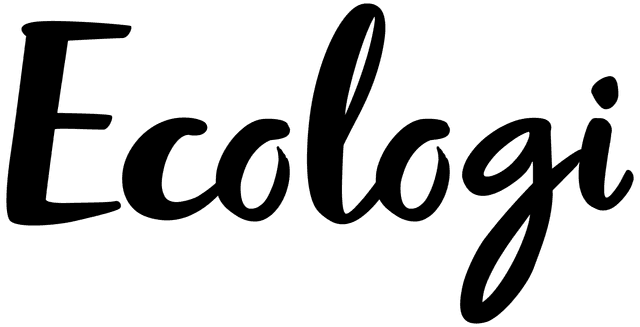)
Ever made a purchase and felt like a brand just got you? Like they were speaking your language or reflecting exactly who you are?
Well, that’s no coincidence. The truth is, your decision was probably influenced by a brand archetype – a subtle yet powerful force quietly guiding your choices.
You might be thinking, “What’s a brand archetype?” It’s essentially a character your favourite brands embody – a silent storyteller shaping their identity. Whether you realise it or not, these archetypes tap into your personality, desires, and aspirations.
Who we are as individuals – and the traits we possess – heavily impacts the purchases we make. Brands know this, and they’re using it to their advantage. By understanding who their customers are and the personality traits they exude, brands can build an identity that connects with you on a deeper level.
Are you someone who loves breaking the rules? Then brands adopting the Outlaw archetype might have caught your eye. Or maybe you’re all about fun and living in the moment, which makes The Jester archetype your go-to.
In this post, we’re exploring the 12 different brand archetypes and how businesses can leverage this knowledge to build deeper connections and drive success.
Connecting on a Deeper Level
As much as your ageing boss refuses to accept it, we’re with you – brands, at their core, aren’t just logos, taglines, or products. They represent stories, values, and emotions. The most successful brands have learnt that tapping into these universal human experiences creates strong emotional connections, making their presence unforgettable by association.
They’ve also learnt that this can be done consistently and effectively using Brand Archetypes.
If you can tap into the emotions or behaviours your target audience is seeking, you can shape your brand in a way that speaks directly to them.
Aligning with the right archetype isn’t just smart – it’s essential in a world where customers have endless choices, and you need to stand out.
There are plenty of businesses out there offering exactly what you do. So, what’s going to make your brand stick in people’s minds? Aligning with specific archetypes helps you understand your customers on a personal level, allowing you to create campaigns that resonate and linger.
It’s about creating a brand experience they won’t forget.
Where Did Brand Archetypes Come From?
Brand archetypes stem from the work of Swiss psychologist Carl Jung, who proposed that humans are born with a set of instinctive behavioural patterns called archetypes. These universal symbols represent fundamental human desires, fears, and motivations.
Jung’s archetypes have since been adapted by brand experts to give businesses a framework for defining their personality and crafting a relatable, human story. While Jung identified archetypes as essential elements of the human psyche, in branding, these archetypes have been reframed as strategic tools. They help brands position themselves with a consistent personality that appeals to our deepest instincts and emotions.
This archetypal approach enables businesses to clarify who they are, how they communicate, and ultimately, how they connect with their audience.
) Meet the 12 Brand Archetypes
Meet the 12 Brand Archetypes
At the heart of the archetype framework are 12 key archetypes, each representing a set of values, traits, and behaviours. Let’s take a closer look at each.
Note: this can all feel a bit horoscopy but I've tried to condense Carl Jung's brain into tiny paragraphs so give me a break.
The Innocent (Desires: Safety)
The Innocent archetype is all about simplicity, optimism, and goodness. Brands that embody this archetype appeal to our inner desire for happiness, purity, and nostalgia. They offer a sense of security and hope, promising a world where everything is safe and predictable. Think of brands that encourage you to see the world through rose-tinted glasses—free from worry and complication.
Key Desire: To be happy and free.
Traits: Pure, optimistic, and simple.
Brand Example: Coca-Cola – its messaging often revolves around happiness, innocence, and nostalgia.
The Explorer (Desires: Freedom)
Driven by a constant quest for new experiences, The Explorer is restless, curious, and independent. Brands that align with this archetype inspire consumers to break away from the ordinary, encouraging them to explore the unknown. For those who thrive on adventure and self-discovery, these brands represent freedom, independence, and the thrill of the journey.
Key Desire: Freedom to discover.
Traits: Adventurous, curious, and restless.
Brand Example: Jeep – embodying the spirit of adventure and discovery.
The Sage (Desires: Understanding)
The Sage archetype seeks knowledge and wisdom above all else. For these brands, truth is everything. They strive to provide clarity and understanding, guiding their audience toward informed decisions. A Sage brand values education, reflection, and intellectual depth, positioning itself as a trusted source of insight in a complex world.
Key Desire: To seek truth.
Traits: Wise, knowledgeable, and analytical.
Brand Example: Google – the brand that empowers us with knowledge and truth.
The Hero (Desires: Mastery)
The Hero archetype is all about strength, courage, and determination. Brands embodying The Hero are focused on empowerment, inspiring people to take action, overcome obstacles, and achieve greatness. They thrive on challenge, encouraging their audience to push beyond limits and become the best version of themselves.
Key Desire: To prove one’s worth through courageous acts.
Traits: Bold, inspirational, and determined.
Brand Example: Nike – motivating people to take action and "Just Do It."
The Outlaw Desires: (Desires: Liberation)
The Outlaw archetype rebels against the status quo, seeking revolution and change. Outlaw brands appeal to those who feel constrained by societal norms and long for freedom and authenticity. With a bold, disruptive spirit, these brands don’t shy away from challenging the system, embracing a rebellious edge that captivates and inspires.
Key Desire: Revolution and change.
Traits: Rebellious, disruptive, and bold.
Brand Example: Harley-Davidson – a brand synonymous with freedom and rebellion.
The Magician (Desires: Power)
The Magician archetype is all about transformation and making dreams come true. These brands inspire wonder and awe, inviting consumers to believe in the extraordinary. They often tap into deep emotional desires for change, promising to turn the impossible into reality. Magician brands weave a narrative of vision, imagination, and the power to create a better world.
Key Desire: To make dreams come true.
Traits: Visionary, imaginative, and spiritual.
Brand Example: Disney – a company built on the magic of storytelling and imagination.
The Regular Guy/Girl (Desires: Belonging)
Relatable, approachable, and grounded, The Regular Guy/Girl archetype seeks to belong and connect. These brands value sincerity and represent the everyman. They aim to meet the basic needs of ordinary people, building trust through authenticity. They avoid pretension and instead foster a sense of comfort and community.
Key Desire: To belong and connect.
Traits: Down-to-earth, relatable, and sincere.
Brand Example: IKEA – a brand that appeals to everyday people and offers practical solutions.
The Lover (Desires: Intimacy)
Passion, intimacy, and sensuality are at the heart of The Lover archetype. These brands appeal to emotions and seek to create deep, meaningful connections with their audience. Lover brands focus on beauty, desire, and indulgence, celebrating the joy of human connection and the pleasures of life. They invite their audience to fall in love with their offerings.
Key Desire: Intimacy and passion.
Traits: Sensual, warm, and committed.
Brand Example: Chanel – representing luxury, passion, and sensuality.
The Jester (Desires: Enjoyment)
Fun-loving, playful, and spontaneous, The Jester archetype encourages living in the moment and not taking life too seriously. These brands use humour and wit to connect with their audience, bringing joy and lightness to everyday experiences. The Jester isn’t afraid to break the rules or be a little outrageous—offering a refreshing alternative to the serious.
Key Desire: To live in the moment and enjoy life.
Traits: Playful, humorous, and light-hearted.
Brand Example: Old Spice – using humour and irreverence to connect with its audience.
The Caregiver (Desires: Service)
The Caregiver archetype is defined by compassion, protection, and generosity. These brands seek to nurture and support others, often focusing on providing comfort and safety. A Caregiver brand reassures its audience, offering a sense of security and dependability. They exist to help and protect, making others feel valued and cared for.
Key Desire: To protect and care for others.
Traits: Compassionate, nurturing, and generous.
Brand Example: Dove – focusing on care and self-esteem, particularly through its real beauty campaigns.
The Ruler (Desires: Control)
The Ruler archetype is synonymous with control, power, and leadership. These brands exude authority and confidence, positioning themselves as leaders in their field. A Ruler brand promises order and stability, attracting those who desire control and the assurance that comes with following the best. They represent success and mastery.
Key Desire: Control and power.
Traits: Authoritative, responsible, and confident.
Brand Example: Rolex – a symbol of luxury, control, and success.
The Creator (Desires: Innovation)
At the heart of The Creator archetype is a desire to innovate and bring something new into the world. These brands are driven by imagination, creativity, and originality, often appealing to those who value self-expression and innovation. Creator brands inspire their audience to think differently, pushing boundaries to create something of lasting value.
Key Desire: To create something of lasting value.
Traits: Imaginative, innovative, and driven.
Brand Example: Apple – a brand known for its creativity, innovation, and design.
How to Identify Your Brand’s Archetype
Choosing your brand’s archetype is a foundational step in developing a meaningful and consistent brand identity. But how do you find the right archetype for your business?
Think of it this way: brand archetypes work because they reflect the real people around us. We’ve all got that colleague who’s loud and outspoken – that’s The Outlaw. Or that friend who’s constantly asking ‘why?’ about every little thing – that’s The Explorer. Recognising these archetypes in the people you know helps you either connect with them or steer clear, depending on your vibe.
As a brand, this is key. You want to position yourself as that friend that people naturally gravitate towards. Not everyone’s going to click with your brand, and that’s perfectly fine. What matters is that your target audience does. Just like you don’t gel with everyone you meet, your brand won’t resonate with everyone – but it should absolutely connect with the right people.
Here are three steps to help you decide:
Understand Your Brand’s Core Values
What does your brand stand for? Go right back to the start, why did your business start in the first place? Are you more focused on innovation, adventure, or community? The key is to align your archetype with your values.Know Your Audience’s Desires
Archetypes are particularly powerful because they reflect universal human desires. Consider what your audience craves emotionally—freedom, belonging, knowledge, or connection. What have you heard your customers say?Assess Your Brand’s Personality
Brands, like people, have personalities. Think about how your brand acts and communicates. Are you confident like The Ruler, or playful like The Jester? We use personality sliders in our brand workshops to help clients nail down their personality,
So, the trick? Figure out who you want to connect with, and then craft your brand to match that. It’s about finding your people – the ones who get you and want what you’ve got. And once you do that, you’re golden.
Using Archetypes in Your Brand Strategy
Once you’ve identified your brand’s archetype, or archetypes, as you can have a primary, secondary, even tertiary if you like, the next challenge is using it effectively across your brand strategy.
Here’s how you can do it:
Craft Consistent Messaging
Your brand voice, tone, and style should reflect your archetype consistently. If your brand is The Caregiver, ensure your communications are nurturing and compassionate across all channels.Strengthen Storytelling
Archetypes provide a framework for storytelling, allowing you to create narratives that resonate emotionally. For example, brands that identify with The Hero archetype can tell stories of triumph, motivation, and overcoming challenges.Build Emotional Connections
The power of archetypes lies in their ability to build emotional bonds with your audience. By speaking to core human desires and emotions, brands can create long-lasting loyalty.
The Limitations of Brand Archetypes
While archetypes are a powerful tool for shaping brand identity, they’re not without their limitations. Brands should avoid becoming too rigid in their adherence to an archetype, as this can lead to a one-dimensional perception. Flexibility is key. As your brand evolves, you may find elements of other archetypes also resonate with your audience or reflect your business growth.
So maybe decide on a triad of archetypes; Primary, Secondary and Tertiary. And heavily weight your comms to the primary whilst sprinkling with a hint of the others too if prudent.
Conclusion: Balancing Structure with Flexibility
Brand archetypes will help you approach your brand identity in a structured way, allowing you to communicate with clarity, consistency, and emotional impact. But remember, the most memorable brands are those that combine the strength of archetypal storytelling with the flexibility to evolve and adapt.
At the end of the day, the real magic of brand archetypes lies in their ability to forge deeper, emotional connections with your audience—connections that resonate far beyond just a product or service. When done right, they offer more than just a marketing framework; they create a living, breathing personality for your brand.
And in a world where consumers are bombarded with choices, isn’t that exactly what you want? To not only be seen but to be remembered?
By embracing the power of archetypes, you can unlock a brand identity that’s not just recognised but truly understood—one that taps into the shared human experience and leaves a lasting impression.
After all, people don’t just buy products. They buy stories, emotions, and identities. Make sure yours is one worth connecting with.
&w=64&q=10)
)
&w=64&q=10)



